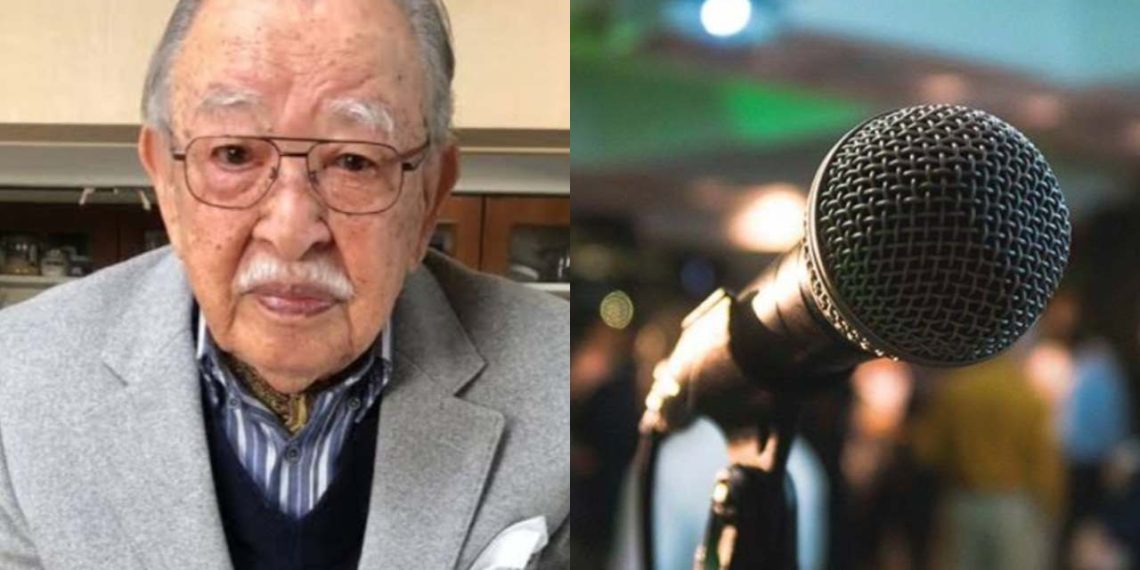Shigeichi Negishi, the Japanese engineer credited with introducing the world to one of its most beloved inventions—the karaoke machine—has passed away at the age of 100, as reported.
Although Negishi’s death has only recently come to light, he passed away from natural causes on January 26 following a fall, confirmed by his daughter, Atsumi Takano.
Negishi’s groundbreaking creation, the “Sparko Box,” was the prototype for the modern karaoke machine and made its debut in 1967.
The inspiration struck Negishi one morning at his electronics firm in Tokyo when an employee overheard his casual singing and jokingly suggested improving his performance with a backing track, a notion that resonated with Negishi’s passion for music.
Farewell to another legend: Shigeichi Negishi, inventor of karaoke, has died age 100. By automating the sing-along, he earned the enmity of performers who saw his machine as a threat to their jobs. It's an eerie precursor of the debate surrounding AI's impact on artists today. pic.twitter.com/ZOpLdSisb2
— Matt Alt (@Matt_Alt) March 14, 2024
During that period, Negishi’s company, Nichiden Kogyo, primarily focused on constructing 8-track tape decks tailored for automobiles. Inspired by his passion for innovation, Negishi directed his team to integrate a microphone, speaker, and tape deck.
The inaugural song played on the Sparko Box was an instrumental rendition of Yoshio Kodama’s “Mujo no Yume.”
Initially embraced within the confines of the office, the machine garnered even greater acclaim when Negishi presented it to his family at home.
Recalling his initial reaction to the machine in Matt Alt’s book, Pure Invention: How Japan Made the Modern World, Negishi said:
“It works! That’s all I was thinking. Most of all, it was fun. I knew right away I’d discovered something new.”
While the notion of karaoke wasn’t entirely novel in either Japan or America, where various sing-along opportunities existed ranging from TV programs to coin-operated jukeboxes, it represented a distinct concept.
In Japan, “karaoke” referred to performances accompanied by a pre-recorded track rather than live musicians, derived from the Japanese words for “empty” (kara) and “orchestra” (ōkesutora).
Negishi contemplated adopting the term “karaoke” for his groundbreaking invention, but encountered resistance from his distribution partner who believed it too closely resembled the Japanese word for “coffin,” “kan’oke.”
Despite spearheading the karaoke movement, Negishi did not amass significant wealth from his invention and eventually withdrew from the business after a brief stint, opting to focus on managing his highly successful company until his retirement at 70.
While he managed to sell approximately 8,000 Sparko Boxes, complete with instrumental recordings and lyric books, to venues ranging from bars and restaurants to “love hotels,” the demands of sales and maintenance, coupled with the arduous patent process in Japan, proved exhausting.
Moreover, a clash between tradition and innovation emerged: Prior to karaoke, itinerant guitarists known as nagashi frequented bars, offering live musical entertainment.
Many of these musicians opposed the introduction of the Sparko Box, often persuading venue owners to return the recently purchased devices.
“They’d tell us that their patrons couldn’t get enough [of the Sparko Box], and that we should never come back,” Negishi said in Pure Invention. “It was the nagashi! They were complaining. Everywhere we put the box, they’d force the owners to take it away.”
Negishi concluded his Sparko Box venture in 1975, with his family retaining the sole remaining device as a cherished memento.
By then, other innovators had arguably made more significant strides in propelling karaoke into the global phenomenon it would later become. Negishi was just one of five individuals in Japan to independently develop a karaoke machine between 1967 and 1971.
Among them, Daisuke Inoue, a nightclub performer, gained renown for his “8 Juke,” released in 1971.
Inoue’s innovation included providing instrumental tracks slightly slowed down and in keys more conducive to average singers.
Nevertheless, Negishi will forever be celebrated as a pioneer, holding the distinction of introducing the first karaoke machine.
The All-Japan Karaoke Industrialist Association continues to recognize the Sparko Box as the inaugural karaoke device.


















